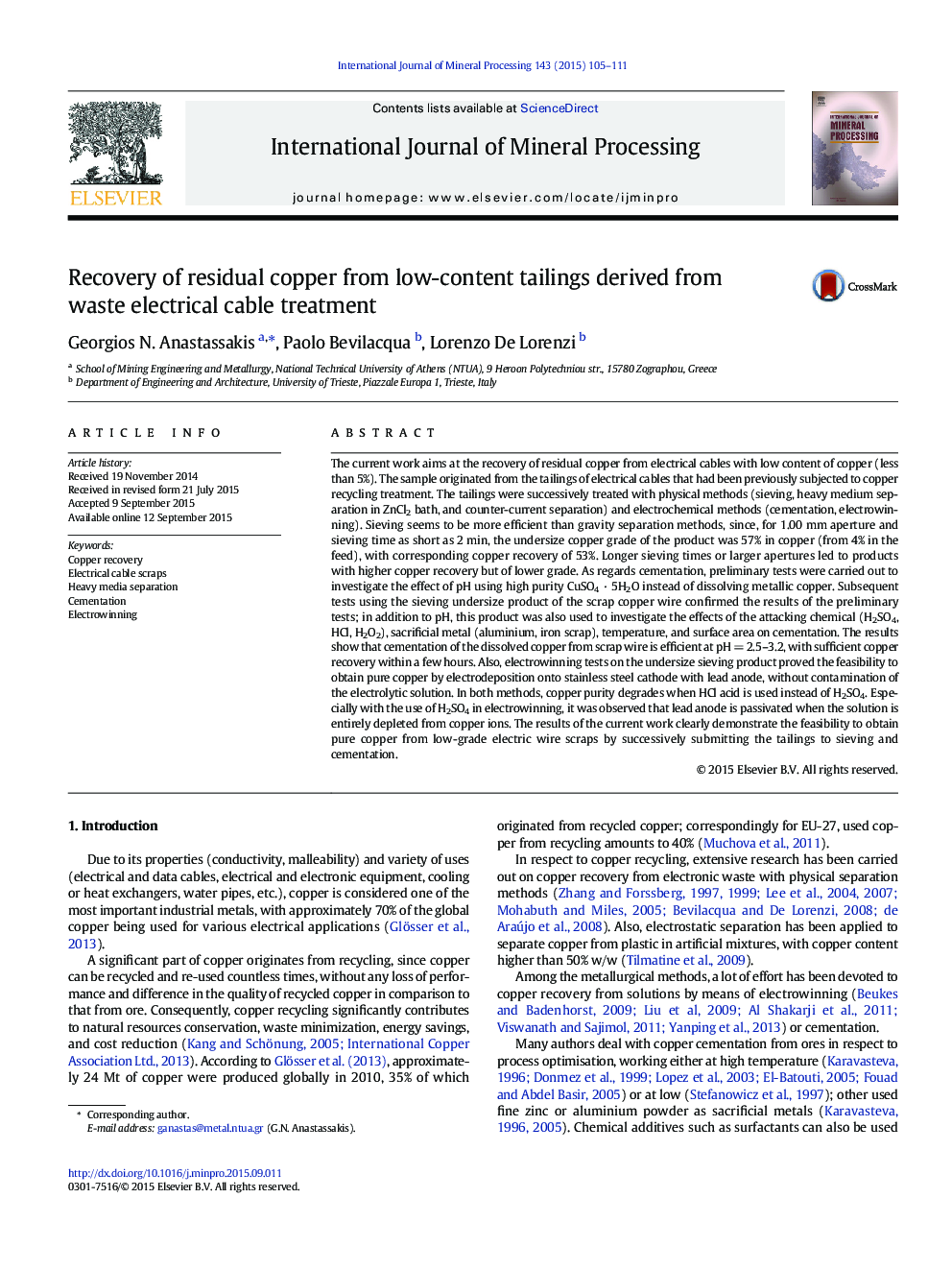| کد مقاله | کد نشریه | سال انتشار | مقاله انگلیسی | نسخه تمام متن |
|---|---|---|---|---|
| 213765 | 1425790 | 2015 | 7 صفحه PDF | دانلود رایگان |
• Efficient copper recovery from low-grade electric wire scraps using a low-cost mechanical process and low-cost materials
• Upgrade of wire scrap by sieving and final copper recovery by chemical dissolution (cementation or electrowinning)
• Copious quantities of chlorides inhibit cementation by means of aluminium, due to CuCl formation.
• Pure Cu electrodeposition onto stainless steel cathode with Pb anode; reuse of electrolytic solution to dissolve Cu
The current work aims at the recovery of residual copper from electrical cables with low content of copper (less than 5%). The sample originated from the tailings of electrical cables that had been previously subjected to copper recycling treatment. The tailings were successively treated with physical methods (sieving, heavy medium separation in ZnCl2 bath, and counter-current separation) and electrochemical methods (cementation, electrowinning). Sieving seems to be more efficient than gravity separation methods, since, for 1.00 mm aperture and sieving time as short as 2 min, the undersize copper grade of the product was 57% in copper (from 4% in the feed), with corresponding copper recovery of 53%. Longer sieving times or larger apertures led to products with higher copper recovery but of lower grade. As regards cementation, preliminary tests were carried out to investigate the effect of pH using high purity CuSO4 · 5H2O instead of dissolving metallic copper. Subsequent tests using the sieving undersize product of the scrap copper wire confirmed the results of the preliminary tests; in addition to pH, this product was also used to investigate the effects of the attacking chemical (H2SO4, HCl, H2O2), sacrificial metal (aluminium, iron scrap), temperature, and surface area on cementation. The results show that cementation of the dissolved copper from scrap wire is efficient at pH = 2.5–3.2, with sufficient copper recovery within a few hours. Also, electrowinning tests on the undersize sieving product proved the feasibility to obtain pure copper by electrodeposition onto stainless steel cathode with lead anode, without contamination of the electrolytic solution. In both methods, copper purity degrades when HCl acid is used instead of H2SO4. Especially with the use of H2SO4 in electrowinning, it was observed that lead anode is passivated when the solution is entirely depleted from copper ions. The results of the current work clearly demonstrate the feasibility to obtain pure copper from low-grade electric wire scraps by successively submitting the tailings to sieving and cementation.
Journal: International Journal of Mineral Processing - Volume 143, 10 October 2015, Pages 105–111
